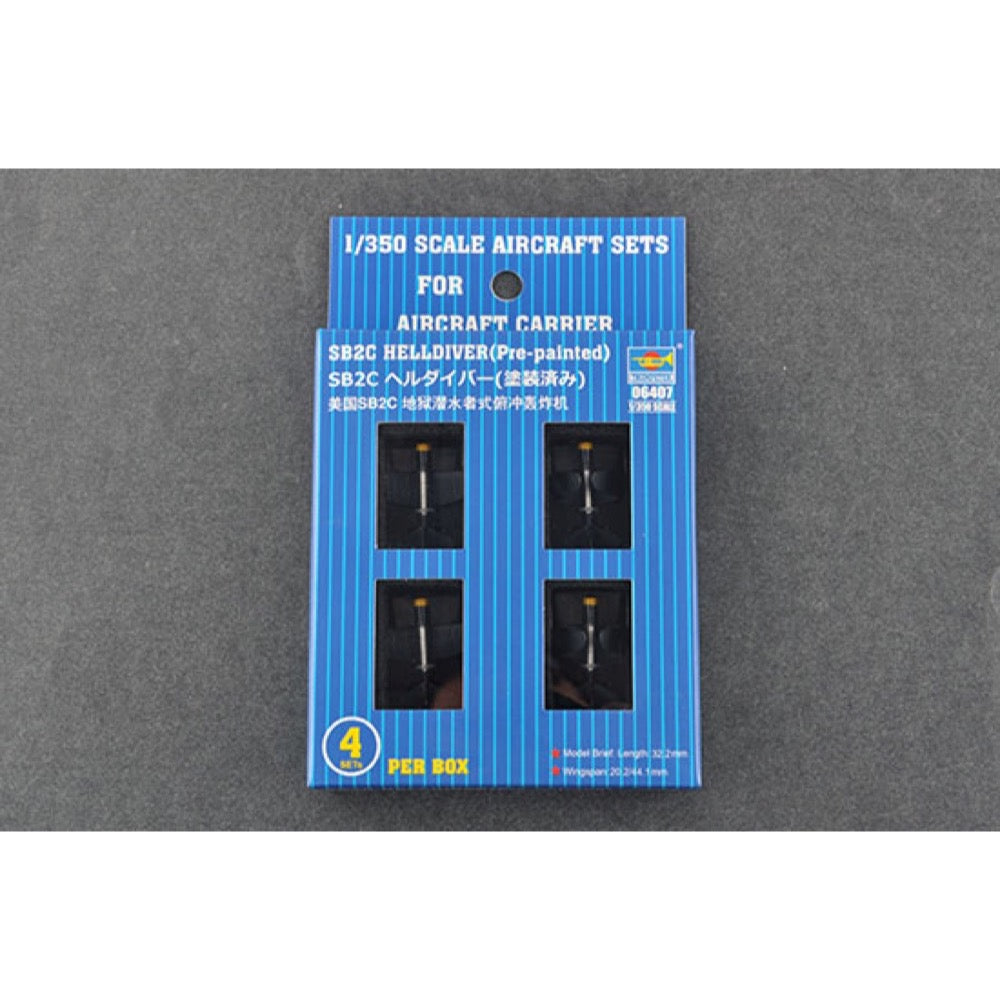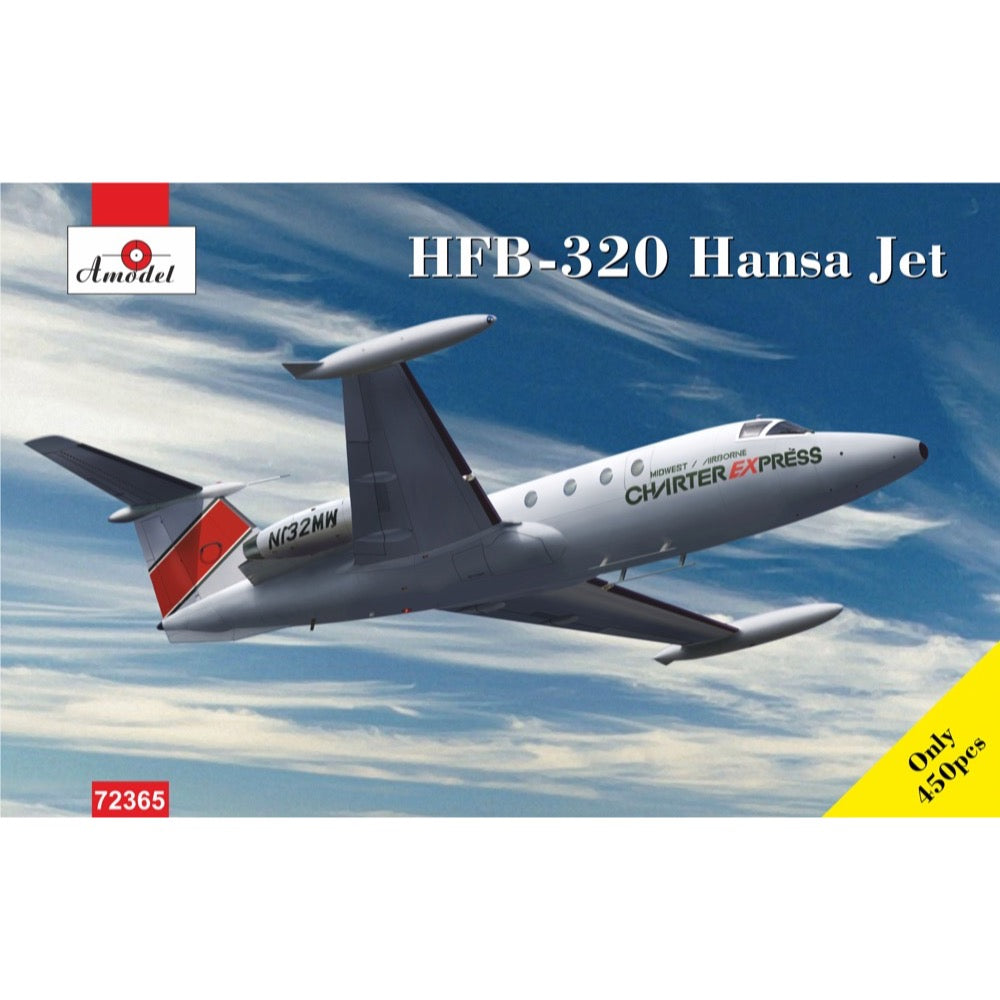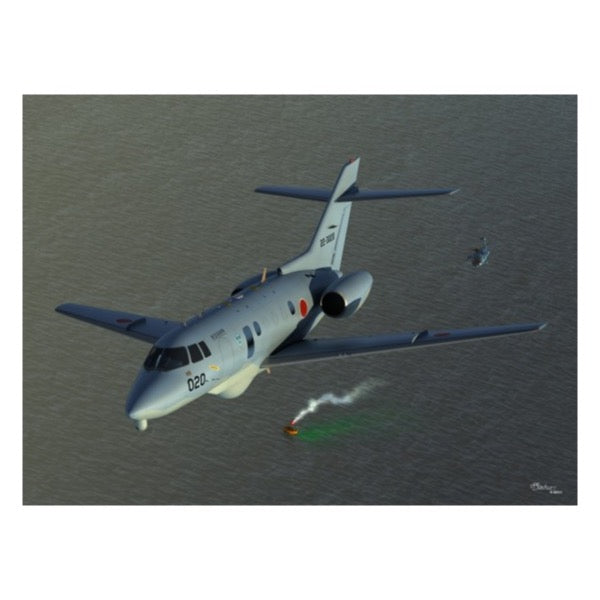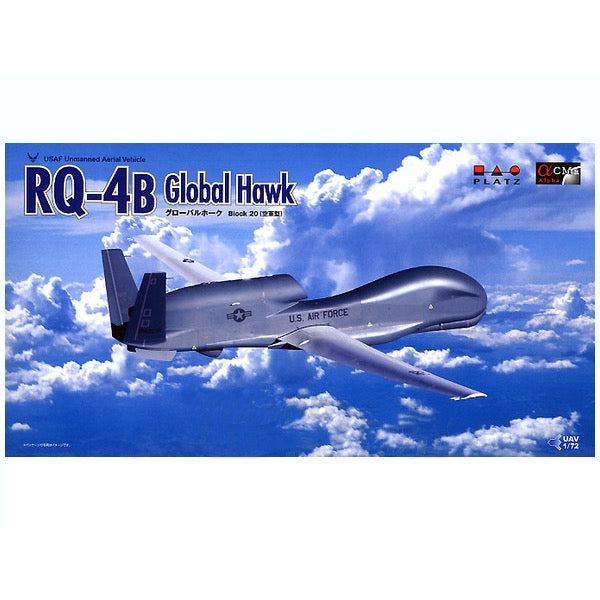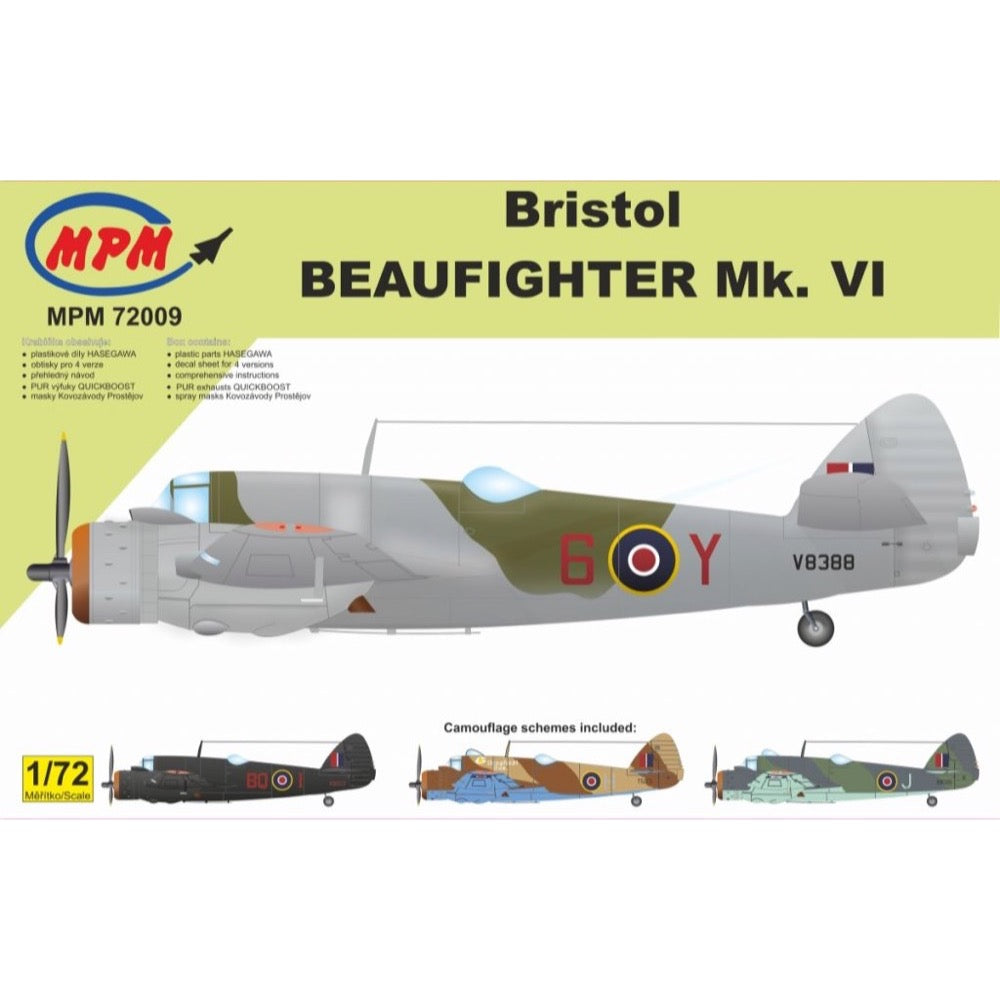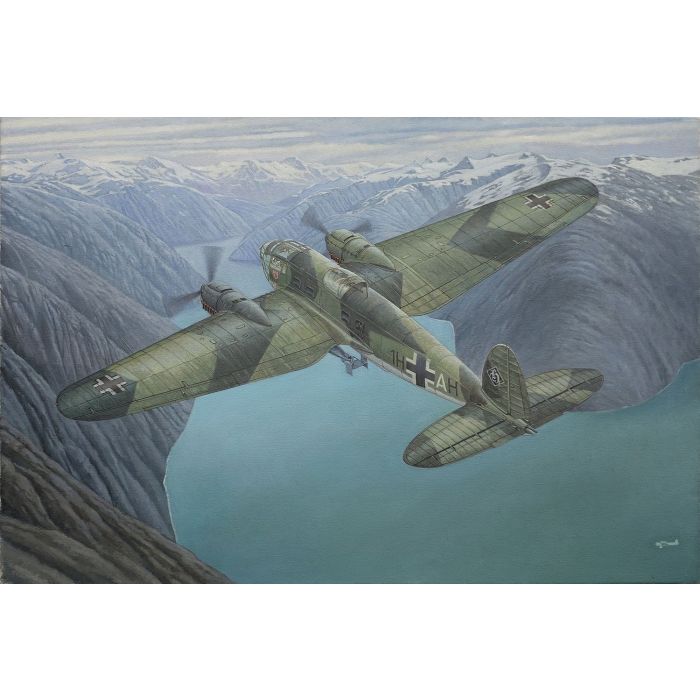
Roden 341 1/144 Heinkel He111 H-6
In In the mid-1930s, after Hitler's rise to power and Germany's effective departure from the restrictions of the Treaty of Versailles, the aircraft manufacturer Ernst Heinkel Fleugzeugwerke developed the successful He 111 twin-engine medium bomber. Initial versions of the design had an elliptical wing shape and a classic fuselage layout, but later versions such as the He 111P were built from the outset with a simpler and better engineered trapezoidal wing, as well as a new fuselage to improve aerodynamic performance and optimizing the location of the crew inside the aircraft.
In 1938, there was a problem with a shortage of the Daimler Benz engines installed on the He 111P and so the designers had to replace them with another type, the Jumo 211, while leaving the rest of the structure unchanged. This modification of the type was designated He 111H. At the beginning of 1939, the production of the He 111H first equaled that of the He 111P and then surpassed it. By September 1939, and the initiation of full-scale combat operations, the numbers of the H variant was already half of all available He 111 aircraft.
In the spring of 1941, the release of the He 111H-6 subtype began, which had even more powerful Jumo 211F engines. The main differences were new wide-bladed propellers, individual exhaust manifolds, in addition to significantly strengthened protective weaponry.
He 111H-6 was used as a night and day bomber, however, due to the expansion of the theaters of war including those over water surfaces, it was quite often used as a torpedo aircraft. It was used in this role both in the European and in the North African theater, with considerable success. The He 111H-6 was a significant threat to naval vessels as it had a good level of aiming speed and precision, and its armament of two torpedoes significantly increased the chances of hitting the target.
In 1942, with the advent of the new He 177 aircraft, it was planned to cease production of the He 111H-6, but problems with the engines of the He 177 forced the Luftwaffe management to extend production of the He 111H-6. In total, 1,775 aircraft of this variant were built, a considerable number of which continued in military service in the following years, thus proving the success of the design and its excellent flight performance characteristics.

Mach 2 GP106 1/72 Vickers VC-10 K2 RAF Camouflaged
Mach 2 brings us their Vickers VC10 K2 Camouflaged kit. The VC10 is a long-distance jet passenger aircraft developed and produced by British aircraft manufacturer Vickers. The British Air Force developed a transport and aerial refueling aircraft based on this plane, calling it the VC10 K2. In 1957, British Overseas Aviation (BOAC) consulted with several British aircraft manufacturers to develop a passenger jet for the Middle-East Empire (MRE) route to South Asia and Africa, and the Vickers VC10 was adopted. This machine uses a rear jet system in which the engine is arranged at the rear of the fuselage instead of the main wing, and the main wing is equipped with a powerful high-lift device, with STOL characteristics that enable takeoff and landing on short runways. The aircraft first flew in 1962, and entered service on the London-Lagos route of the BOAC in 1964. By the end of production in 1971, 54 aircraft had been produced. Although British Airways ended their use of this aircraft in 1981, the British Air Force operated it as an aerial refueling aircraft until 2013.
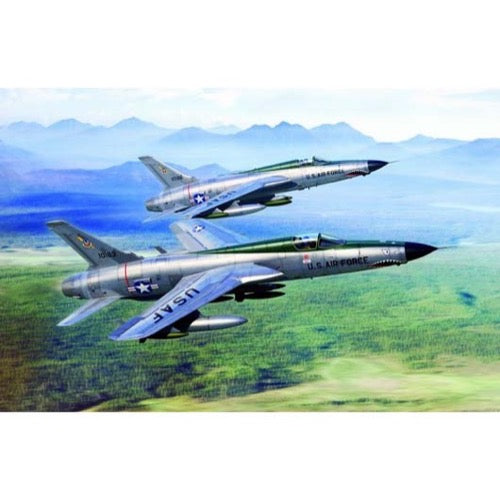
Trumpeter 01617 1/72 F-105D Thunderchief
The F-105 was a supersonic fighter bomber developed by the Republic in 1951 to replace the F-84F. The huge body of the F-105 is mainly used to launch nuclear weapons. The prototype first flew on October 22, 1955, but the first production model, the F-105B, was not delivered to the United States Air Force until 1958. After the production of 833 F-105 series, the new F-105D all-weather attack aircraft and two-seater F-105F combat trainer aircraft were delivered to the army. The F-105G was given the nickname "wild weasel" and was specifically used to attack enemy radar and surface-to-air missile bases.
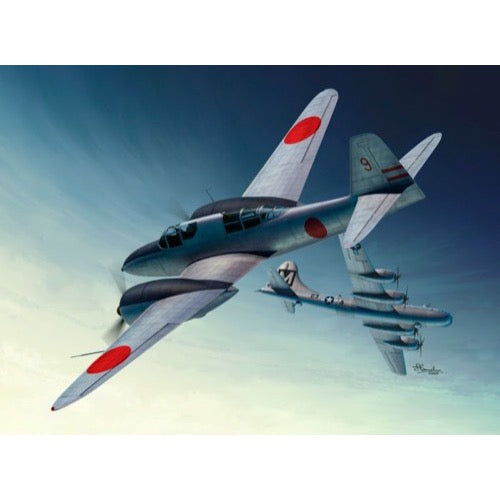
Sword 72124 1/72 Kawasaki Ki-102A/Ki-102B Ko/Otsu Randy
Sword 72124 1/72 Kawasaki Ki-102A/Ki-102B Ko/Otsu Randy Plastic Model Kit
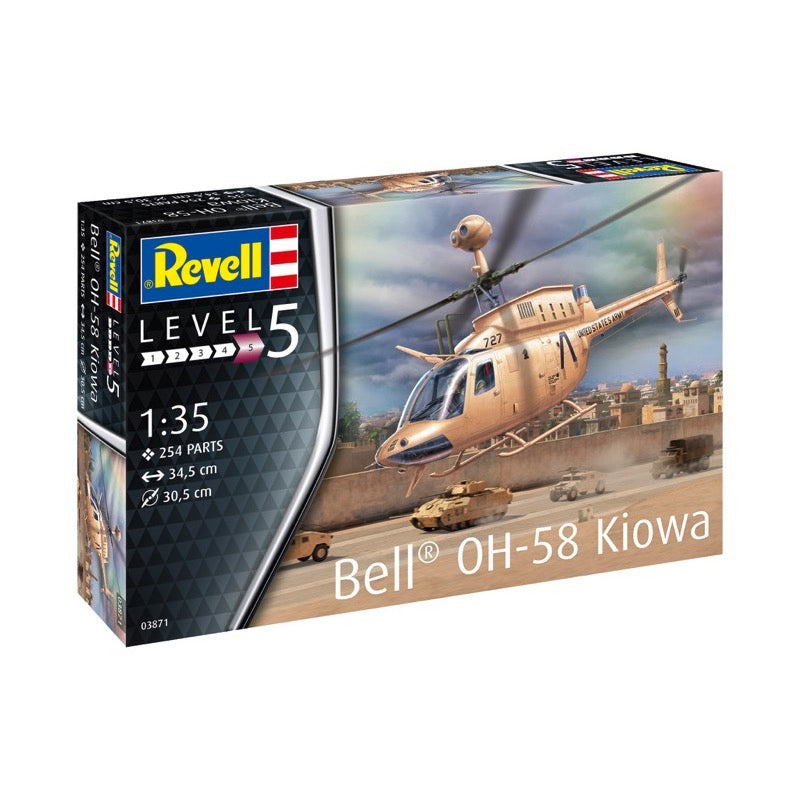
Revell 03871 1/35 Bell OH-58 Kiowa
The OH-58 Kiowa is a light observation and combat helicopter of the US Army. Particularly striking is its spherical mast visor, which contains an infrared vision system, TV optics and a laser target marker and range finder. A large number of guided missiles and rockets can also be carried on two external load racks.
Features
- Highly detailed model
- Detailed mast sight
- Detailed interior



